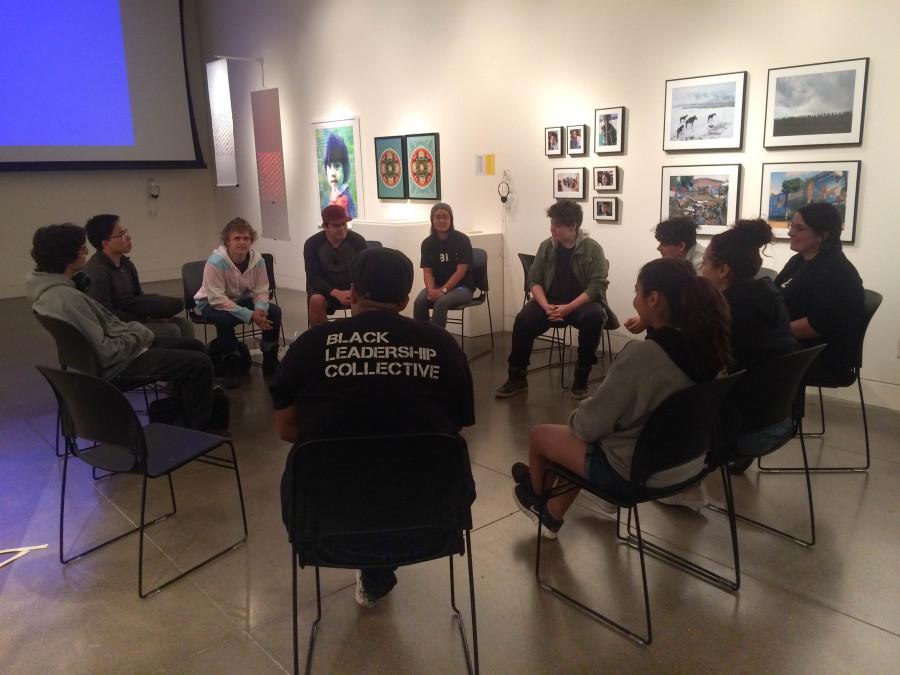Writing Reconstruction: Racial Fluidity and National Reunion in A Romance of the RepublicPosted in Articles, Literary/Artistic Criticism, Media Archive, United States on 2015-12-10 02:29Z by Steven |
Writing Reconstruction: Racial Fluidity and National Reunion in A Romance of the Republic
ESQ: A Journal of the American Renaissance
Volume 61, Number 4, 2015 (No. 241 O.S.)
pages 631-666
DOI: 10.1353/esq.2015.0017
Lori Robison, Associate Professor of English
University of North Dakota
Speaking to a nation traumatized by the divisive war and anxious to find reunification, Lydia Maria Child, with her 1867 novel A Romance of the Republic, presents a portrait of a new national family that transcends the narrow racial and regional identifications of the antebellum past. Carolyn Karcher, Child’s biographer, notes that the novel was very consciously written to address the contemporary challenges of Reconstruction: “Written against the backdrop of the betrayal Johnson was engineering of all the promises the war had seemingly endorsed—genuine emancipation for African Americans; recognition of the indispensable role they had played as soldiers, spies, and auxiliaries; and their incorporation as equal citizens into a truly reconstructed Union—A Romance of the Republic insistently rehearses the history that its white audience was so rapidly forgetting.” This characterization of Child’s motivations for writing the novel hints at its complex rhetorical situation: the novel delves back into the recent, pre-war past to revisit the arguments against slavery, as a means of making the case for more progressive Reconstruction policies in the present and future. Worried, rightfully, that Reconstruction would undo the potential that emancipation had brought for a more egalitarian society, Child faced a contradictory writing task: she needed to represent a future in which the national “house divided” has been re-united while, simultaneously, not letting her readers forget the national divisiveness created by slavery in the recent past.
It is these contradictory tasks, I believe, that led Child to choose the sentimental romance as the genre through which to write this early novel of Reconstruction. To address the threat of cultural amnesia, the novel, which is set almost entirely in the antebellum period, uses appeals to sympathy to undermine slavery—just as do Child’s earlier abolitionist texts. Yet to also avoid entrenching resistant readers in the past, the novel, at the same time, uses the romance’s insistence on union to represent a more promising future. Conflating domestic union with national (re)union (a conflation signaled by the novel’s title), Child gives her readers a means of imagining a new post-war nation. The novel’s final scenes take place in the days following the end of the Civil War and it is in these final pages that the “republic” of the title is imagined in the new domestic space that heroines Rosa and Flora have achieved for themselves. Though it does not end with a wedding, the novel nonetheless does end like the traditional romance plot, with the promise of a new, united family and continuing, utopian domesticity.
Rhetorically, then, Child’s choice of genre makes a great deal of sense. My interest, however, in exploring A Romance of the Republic is to better understand how the literature of Reconstruction—even those texts with very progressive politics—would ultimately pave the way for the pro-Confederate romances that became so popular by the turn of the century. Post-Reconstruction literary representations of the regional and racial politics of national reunification came increasingly to be lodged in the genre of the sentimental romance. Published early in Reconstruction, A Romance of the Republic initiates this trend, largely because of its transitional status as an abolitionist text addressing post-abolition issues. As June Howard reminds us, “empathy and sympathy have different politics at different moments, and at any given moment are likely to have mixed and complicated politics,” and A Romance uses many of the rhetorical strategies that Child and other abolitionists had used so effectively in the fight against slavery, although the post-war fight for racial equality had very different political stakes. The hallmarks of the sentimental romance, sympathetic connection built through an appeal to union and family, effectively undermined slavery by asserting the humanity of those who had been enslaved. However, this sympathetic appeal also, I believe, worked to fix identities at a time in which our understanding of racial and national identities could have been more fluid and thus could have developed quite differently than they did. In…

